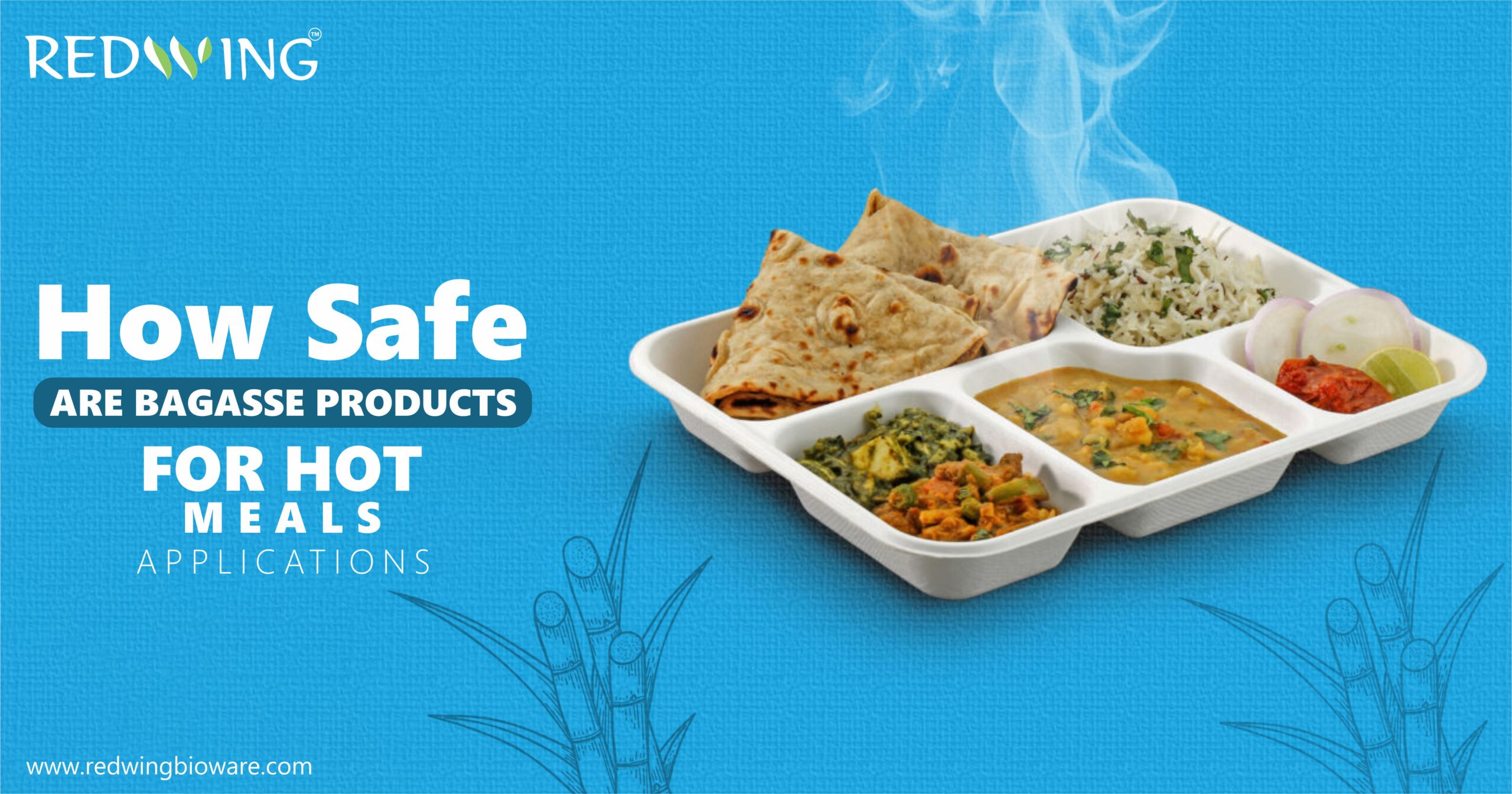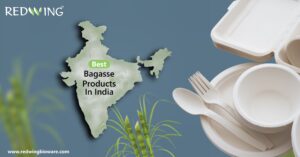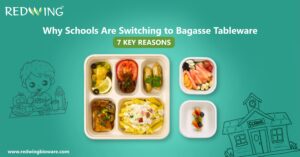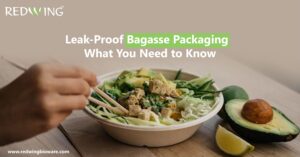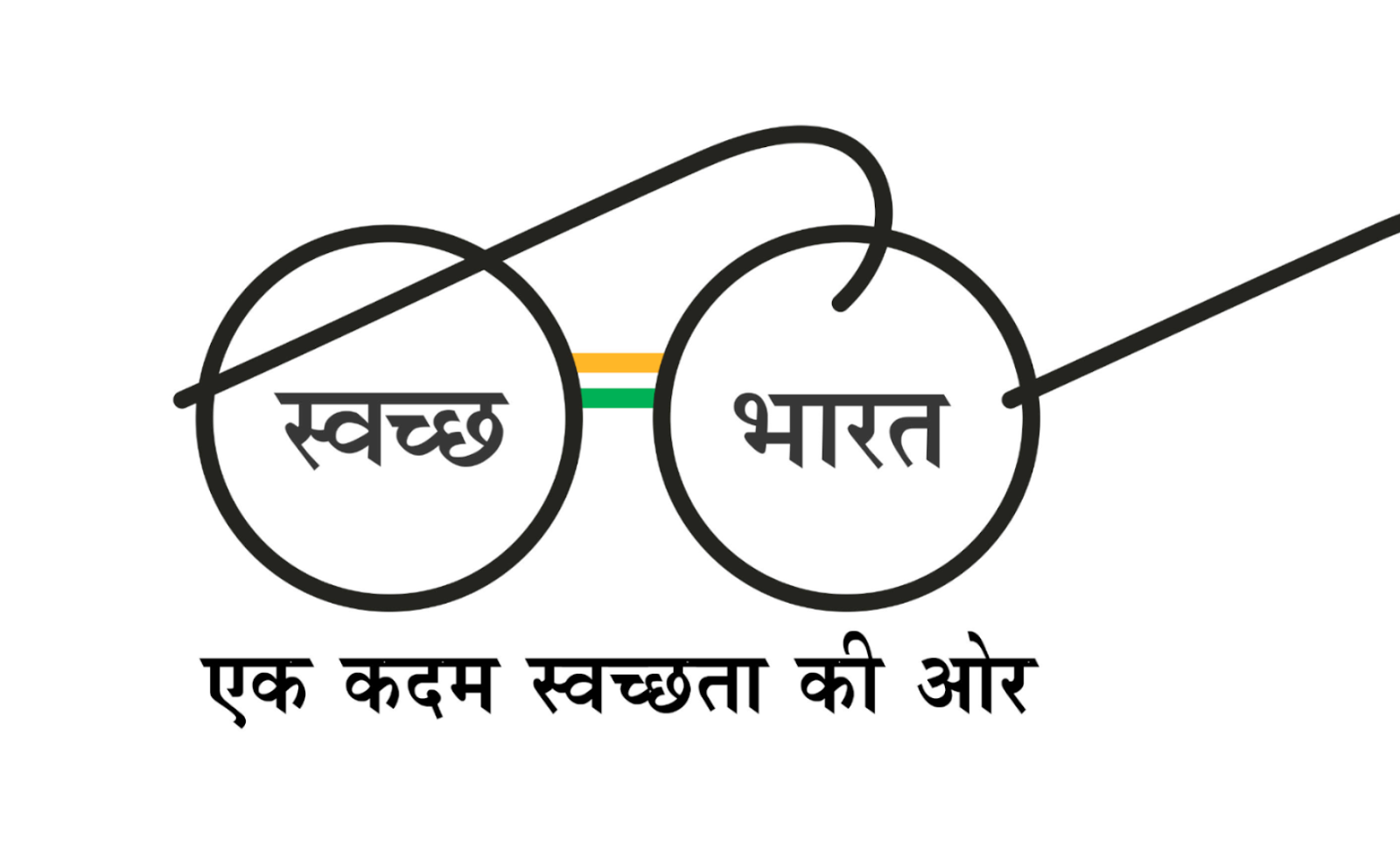The shift towards sustainable packaging has led to an increasing demand for bagasse products as an eco-friendly alternative to plastic and Styrofoam. As consumers and businesses look for safer, biodegradable options, sugarcane bagasse products have emerged as a top choice in the food packaging industry. However, one common concern is whether bagasse food containers are safe for hot meals applications.
This article explores the safety, durability, and environmental impact of bagasse products while assessing their suitability for hot foods.
Understanding Bagasse and Its Characteristics
Bagasse is a byproduct of sugarcane processing, primarily composed of fibrous material left after extracting juice from sugarcane stalks. Instead of being discarded as agricultural waste, bagasse is repurposed into eco-friendly products such as food containers, plates, bowls, and packaging materials. Due to its sustainable nature and versatility, bagasse has become a widely used alternative to traditional plastic and Styrofoam products.
With global concerns over plastic pollution and the demand for sustainable food packaging, sugarcane bagasse products have gained immense popularity in the food service industry. But what makes bagasse so unique? Let’s explore its composition, properties, and benefits.
Composition and Physical Properties of Bagasse
Bagasse consists of cellulose, hemicellulose, and lignin, which provide strength, durability, and heat resistance—key characteristics required for food containers and other biodegradable packaging.
Key Physical Properties of Bagasse:
- Lightweight yet sturdy – Ideal for making disposable tableware and food packaging.
- High moisture and grease resistance – Prevents leakage and food contamination.
- Heat-resistant up to 200°F (93°C) – Suitable for hot meals, soups, and microwaving.
- Biodegradable and compostable – Naturally decomposes within 60-90 days.
- Neutral odor and taste – Does not affect food quality or flavor.
These unique properties make bagasse products a preferred choice for sustainable packaging.
Safety Evaluation of Bagasse Products for Use in Hot Meals Applications
One of the primary concerns with any food container is whether it alters food quality or releases harmful chemicals when exposed to high temperatures. Many conventional plastic containers contain BPA, PFAS, and other toxins, which can leach into food when heated.
Are Bagasse Products Safe for Hot Meals?
Yes! Unlike plastic and Styrofoam, bagasse products do not contain harmful chemicals. Since they are derived from natural sugarcane fibers, they provide a toxin-free and safe food packaging option. Studies confirm that sugarcane bagasse products do not release harmful substances when exposed to hot meals or liquids, making them a reliable choice for health-conscious consumers.
Key Safety Features of Bagasse Food Containers:
Heat-Resistant Material
Bagasse food containers are designed to withstand high temperatures, making them ideal for serving hot meals, soups, and beverages. They can endure heat up to 200°F (93°C) without warping or releasing harmful substances. Unlike plastic containers that may melt or deform when exposed to hot meals, sugarcane bagasse products maintain their shape and integrity, ensuring a spill-free and safe dining experience. This makes them one of the best food containers for eco-friendly and reliable food packaging.
No Chemical Leaching
One of the biggest concerns with conventional plastic and Styrofoam containers is the leaching of harmful chemicals like BPA and phthalates when they come into contact with heat. Bagasse products, however, are made from natural sugarcane fibers and are completely free from PFAS, toxic chemicals, and synthetic additives. This ensures that no harmful substances contaminate your food, making it a safer choice for health-conscious consumers and businesses.
Odorless and Tasteless
Unlike some packaging materials that can impart an unpleasant smell or taste to food, bagasse food containers are completely odorless and tasteless. This is particularly important for delicate dishes, beverages, or dairy-based foods where any external odor could alter the overall flavor experience. Sugarcane bagasse products preserve the natural taste and aroma of the food, ensuring that the quality remains intact from storage to consumption.
Grease and Moisture Resistance
Another key safety feature of bagasse food containers is their natural resistance to grease and moisture. This makes them an excellent choice for hot, oily, or saucy foods, preventing leaks and maintaining food presentation and hygiene. Their sturdy composition ensures they do not become soggy or break down prematurely, providing a reliable and durable alternative to traditional packaging.
Bagasse Products’ Microwave-Safe Features
A major advantage of bagasse food containers is their microwave-safe properties. While many plastic containers release toxins or degrade under heat, sugarcane bagasse products can safely be used in a microwave for reheating food.
Microwave and Oven Safety:
- Bagasse containers are microwave-safe for up to 3-5 minutes at high temperatures.
- Some bagasse products are oven-safe up to 375°F (190°C), depending on the manufacturer.
- They maintain their structure without breaking down, unlike paper-based alternatives.
However, prolonged exposure to high temperatures (beyond the recommended limit) may weaken the fibers. Always check manufacturer guidelines for best usage practices.
Effects on the Environment and Consumer Interest in Bagasse Products
Reducing Plastic Waste with Sugarcane Bagasse Products
Plastic pollution is a significant global problem, with millions of tons ending up in oceans and landfills every year. Traditional plastic containers take hundreds of years to decompose, whereas bagasse food containers break down within a few months.
By switching to sugarcane bagasse products, businesses and consumers contribute to reducing plastic waste and promoting a circular economy.
Compostability and Sustainability
One of the biggest advantages of bagasse products is that they are 100% compostable. Unlike plastic, which lingers in the environment, bagasse food containers naturally break down and enrich the soil, making them an excellent choice for sustainability-conscious businesses.
As demand for green alternatives continues to rise, the adoption of bagasse products is expected to grow across various industries. From food packaging and catering to airlines and hospitality, sugarcane bagasse products are becoming a preferred choice for environmentally responsible consumers.
By choosing bagasse food containers, consumers are making a positive impact on the environment while enjoying safe, durable, and high-quality food packaging solutions.
What Makes Bagasse Products Popular with Consumers?
With increasing awareness about environmental conservation, more consumers are choosing eco-friendly alternatives over plastic. The demand for sugarcane bagasse products has surged due to:
- Health concerns – Avoiding harmful chemicals found in plastics.
- Eco-conscious choices – Supporting biodegradable packaging.
- Government regulations – Many countries are banning single-use plastics, making bagasse products a preferred alternative.
Conclusion
For those seeking safe, heat-resistant, and eco-friendly food packaging options, bagasse products are an ideal choice. Their ability to withstand high temperatures, microwave compatibility, and chemical-free composition makes them a superior alternative to plastic and Styrofoam containers.
With increasing consumer demand and growing environmental concerns, sugarcane bagasse products provide a sustainable, practical, and safe solution for hot food applications. Whether for home use or businesses in the food industry, bagasse food containers offer a reliable and earth-friendly choice.
Reference:
Biodegradable Packaging for Environment by Wikipedia[1].
Yes, bagasse products are completely safe for serving hot food. They can withstand temperatures up to 200°F (93°C) without melting or releasing harmful chemicals. Unlike plastic containers, they do not leach toxins into food, making them a safer and more sustainable choice.
Sugarcane bagasse products are made from natural sugarcane fiber, making them biodegradable and compostable, unlike plastic food containers, which take centuries to decompose. They are also free from BPA, PFAS, and other toxic chemicals, making them a healthier choice for food packaging.
Yes, bagasse food containers have natural grease and moisture resistance, making them ideal for holding hot, oily, and saucy foods without leaking or becoming soggy. They offer excellent durability while being environmentally friendly.
Bagasse products decompose within 60-90 days under composting conditions, unlike plastic, which can take hundreds of years. This makes them an excellent eco-friendly alternative for businesses looking to reduce waste.
Businesses should switch to bagasse food packaging because it is eco-friendly, biodegradable, and free from harmful chemicals. It also helps companies meet sustainability goals and appeal to environmentally conscious consumers while maintaining food safety and quality.

